Puente Max
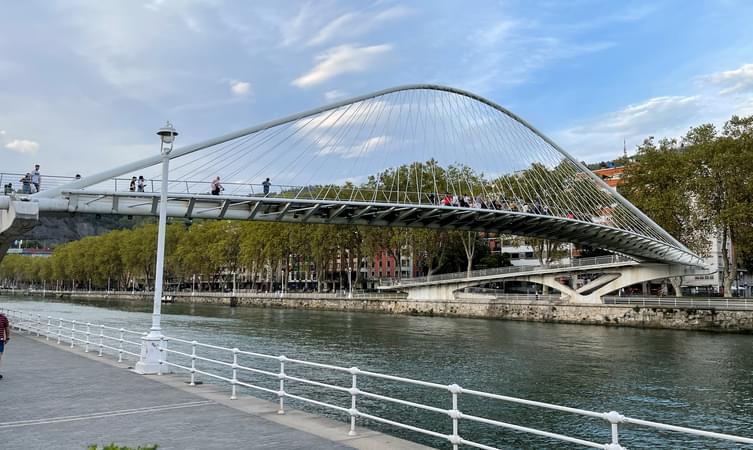
Puente Max in Nuremberg is an architectural gem that spans the Pegnitz River. Named after King Maximilian II, this historic bridge features beautiful arches and intricate designs. A popular spot for locals and tourists, it offers picturesque views of the old town and the river, embodying Nuremberg's rich history and charm.
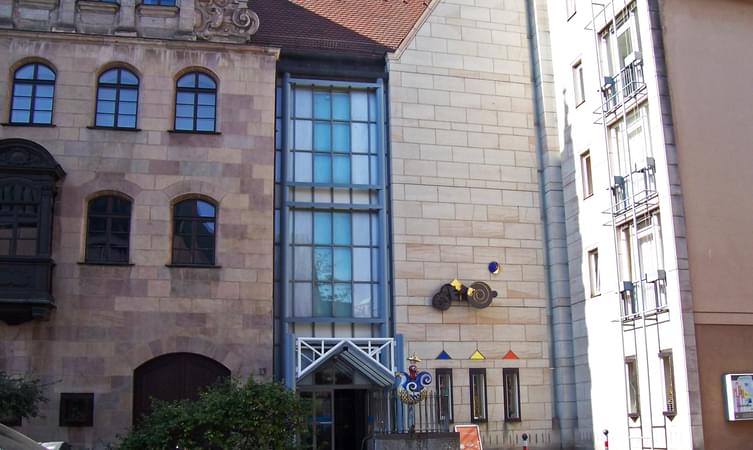
The Toy Museum in Nuremberg, Germany, offers a delightful journey through the history of toys, from ancient artifacts to modern playthings. Visitors can explore extensive exhibits showcasing dolls, model trains, and more, making it a captivating experience for children and adults alike.
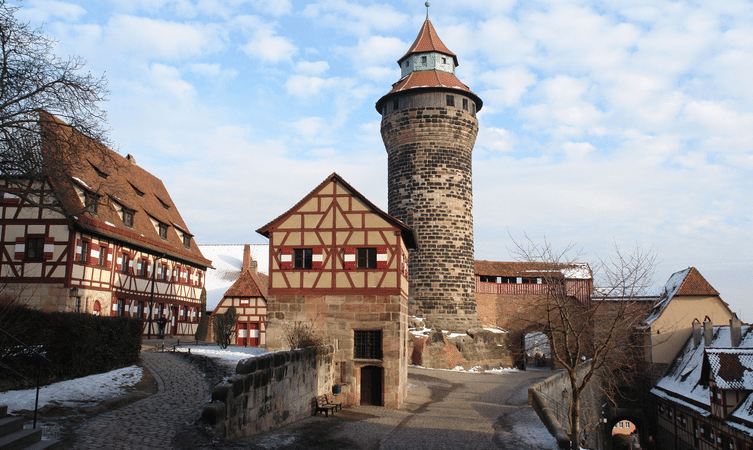
The Imperial Castle of Nuremberg, or Kaiserburg, is a landmark of immense historical significance in Germany. Perched atop a sandstone ridge, this medieval fortress offers stunning views over the city of Nuremberg. Dating back to the 11th century, the castle has played a crucial role in the Holy Roman Empire, serving as a residence for German kings and emperors. Visitors can explore the various sections of the castle, including the Imperial Chapel, the Sinwell Tower, and the Deep Well, which provide fascinating insights into medieval life and architecture.
Weisser Turm
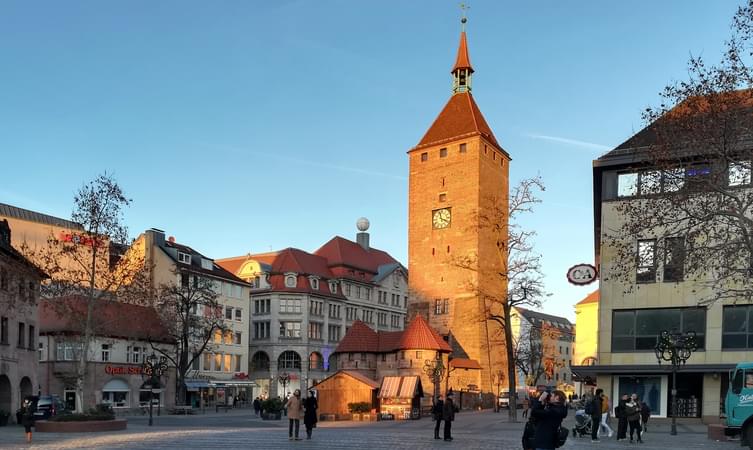
The Weißer Turm, or White Tower, is a captivating piece of Nuremberg’s rich medieval history and a must-visit landmark for anyone exploring this charming German city. Standing as a symbol of the city’s medieval fortifications, the Weißer Turm offers a fascinating glimpse into Nuremberg’s past.
Constructed in the early 13th century, the Weißer Turm is part of the historic city walls that once encircled Nuremberg. Its name, which translates to "White Tower," reflects its striking white exterior, which distinguishes it from other structures in the city. This historic tower played a crucial role in the city's defense, offering strategic views over the surrounding areas and enhancing the fortifications.
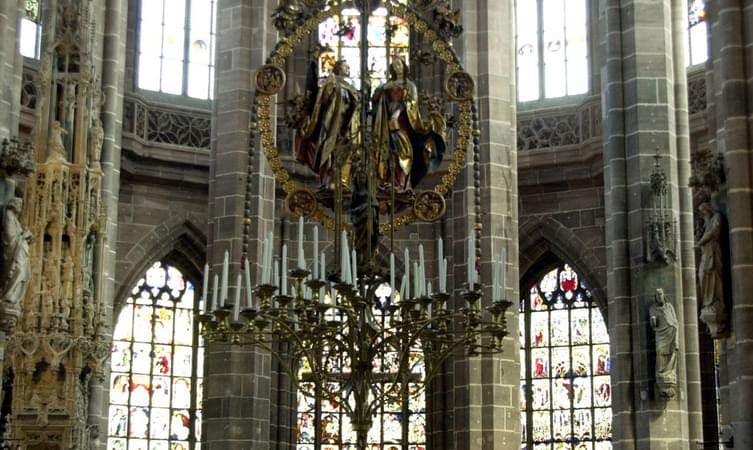
St. Lawrence Church in Nuremberg, a stunning example of Gothic architecture, features intricate stone carvings and impressive stained-glass windows. Built in the 14th century, it is a key historical and religious landmark in the city, offering visitors a glimpse into Nuremberg's rich cultural heritage.

Weissgerbergasse in Nuremberg is a picturesque street that transports visitors back in time with its charming half-timbered houses, vibrant facades, and cobblestone pathways. Located in the heart of the Old Town, this historic lane is named after the tanners who once lived and worked there, as "Weissgerber" means "white tanner" in German. The street is a stunning example of medieval architecture, with buildings dating back to the 16th and 17th centuries, many of which have been meticulously preserved and restored.
Hauptmarkt
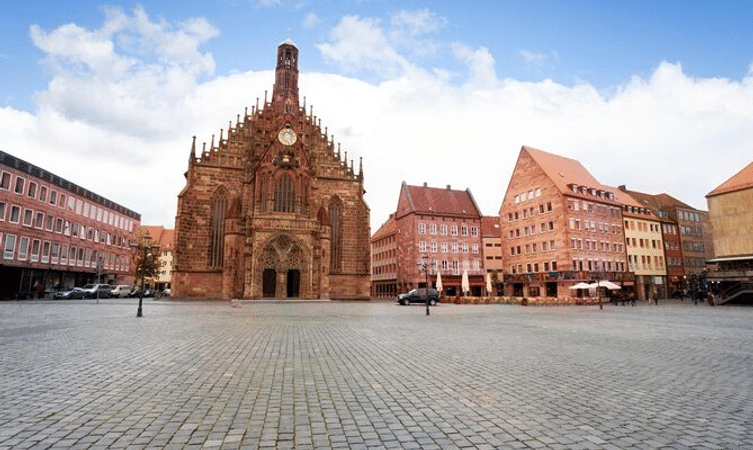
Hauptmarkt is the bustling central square of Nuremberg, Germany, renowned for its lively atmosphere, historic significance, and vibrant market activities. Situated in the heart of Nuremberg's Altstadt (Old Town), Hauptmarkt is a hub of local culture and a must-visit for tourists.
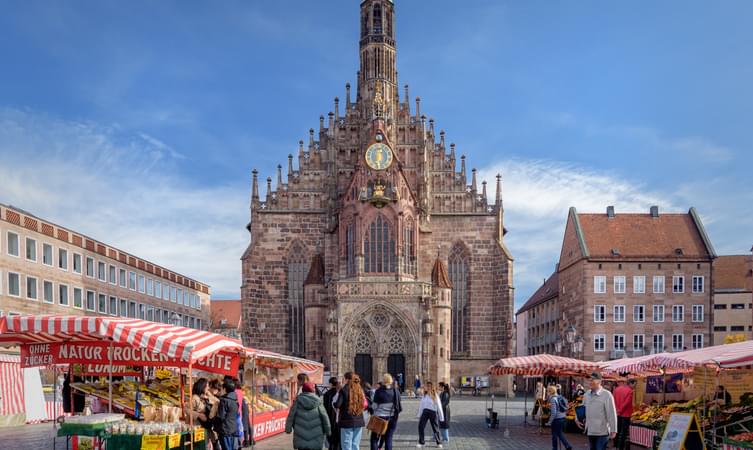
The Frauenkirche, or Church of Our Lady, stands as a magnificent Gothic landmark in the historic city of Nuremberg, Germany. Constructed in the 14th century by Emperor Charles IV, this stunning edifice showcases intricate stonework and an impressive façade adorned with sculptures and ornate details.

St. Sebaldus Church, located in Nuremberg, Germany, is a stunning Gothic masterpiece dating back to the 13th century. It is one of the city's oldest and most important churches, featuring intricate stained glass windows, impressive sculptures, and the ornate tomb of its namesake, St. Sebaldus.
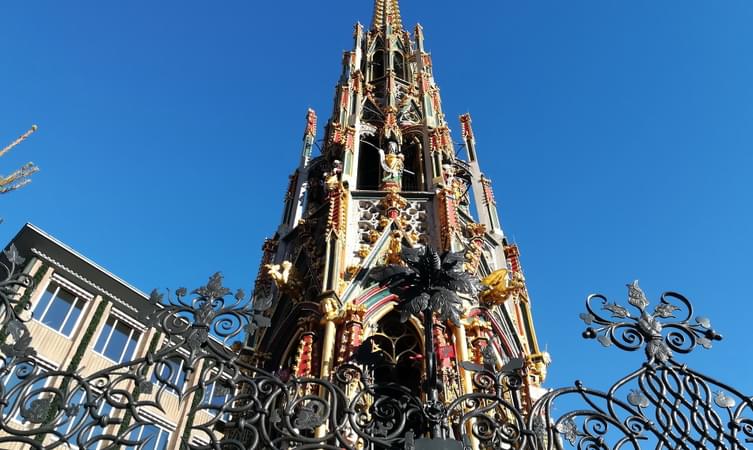
Der Schöne Brunnen, located in Nuremberg, Germany, is a stunning Gothic fountain that dates back to the 14th century. Positioned in the city's Hauptmarkt, this intricately designed monument stands approximately 19 meters tall and is a symbol of Nuremberg's rich history. The fountain resembles a Gothic church spire and is adorned with 40 colourful figures representing the Holy Roman Empire's worldview, including philosophers, evangelists, and notable historical figures.
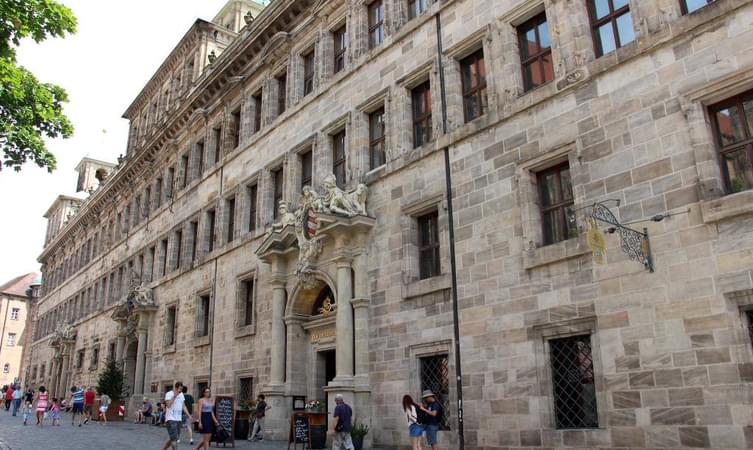
Nuremberg City Hall, or Nürnberger Rathaus, is a prominent historical and architectural landmark located in the heart of Nuremberg, Germany. Constructed between 1616 and 1622, the building epitomizes Renaissance architecture, featuring intricate stone carvings and an impressive façade. Designed by architect Jakob Wolff the Younger, it showcases a blend of Gothic and Renaissance styles, reflecting the city's rich cultural heritage.



